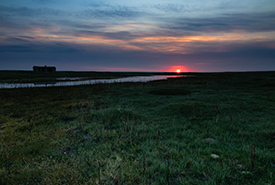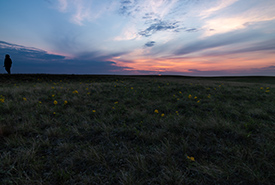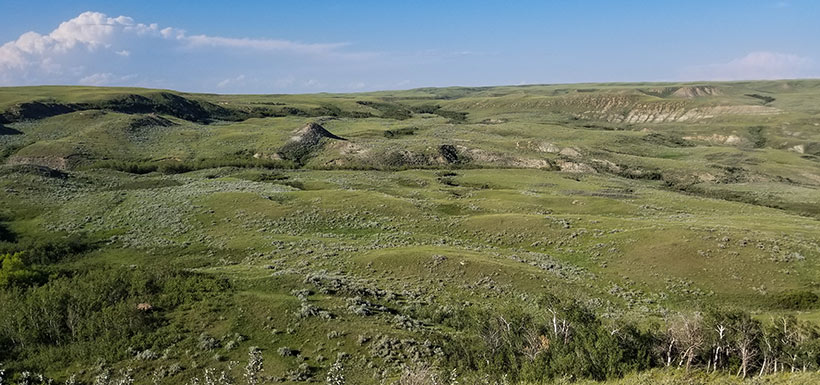When seeing it isn’t enough

Milk River Basin Natural Area, SK (Photo by NCC)
Photos can evoke emotion and connection. This is definitely the case with Canada’s natural landscapes. Think of some of the nature photos you’ve seen that make you pause: beautiful mountain vistas, crystal clear lakes, old-growth forests with massive trees, and the list goes on. This shows the power of photography to connect us to places we may not be able to visit in person. There is one iconic Canadian landscape, however, that I think no image or view from a passing vehicle can give you a full appreciation of: grasslands.
You may have heard by now that temperate grasslands are one of the most at-risk habitat types on the planet. It’s true, and we need to stop taking them for granted. Not only are they being converted at an alarming rate, but they are incredibly challenging to restore, with success taking generations.
Related blog posts
If you don’t hail from one of the Prairie provinces, you may think of this area I call home as flat and covered with wheat and canola. Something to fly over or drive through after the trees end and until you get to the mountains. Don’t get me wrong; there is lots of wheat, canola and the like, but the Prairies are so much more than that.

Sunrise at Old Man on His Back Prairie and Heritage Conservation Area (OMB), SK (Photo by Cameron Wood/NCC staff)
I have seen some incredible photos of the Prairies, and I enjoy getting out with my camera to try to take some myself. The thing is, I think that is just not enough. Unless you already have an appreciation for native grasslands, I don’t know that you can fully appreciate these images. Sure, they may have colourful wildflowers and impressive sunsets. What you can’t get from an image is a true connection to the land. It’s not until you get down on your hands and knees and start looking closely that you realize how incredibly diverse the area is. It’s not until you stand alone in the prairie that you understand how your presence can be so significant and insignificant at the same time. It’s not until you see a herd of plains bison take off as a collective, powerful and graceful wave across the prairie horizon that you can begin to picture this landscape before the plows came.
These are just my own musings, a run-of-the-mill white guy. When you hear Indigenous Elders and Knowledge Keepers speak of the prairie, it is truly humbling. The connections between the prairie and the plants and animals within it to Indigenous culture, language and worldview are stronger than those of us from non-Indigenous cultures can fully understand.

Sunset at OMB, SK (Photo by Cameron Wood/NCC staff)
How does an artist convey all that through a painting or photo? Even people who intellectually know of the importance of grasslands and have seen some of those incredible photos are impacted by experiencing it for the first time. If you have the chance to experience native prairie, don’t pass it up. Next time you drive across the Prairie provinces, make sure to venture off the Trans-Canada Highway.
To get a real connection to this incredible landscape, you must get off the beaten track, get your boots on the ground and maybe even get down on your hands and knees to get a good look. If you look close enough, the diversity you see will rival anything you’ve ever seen — all below the height of your knee.








